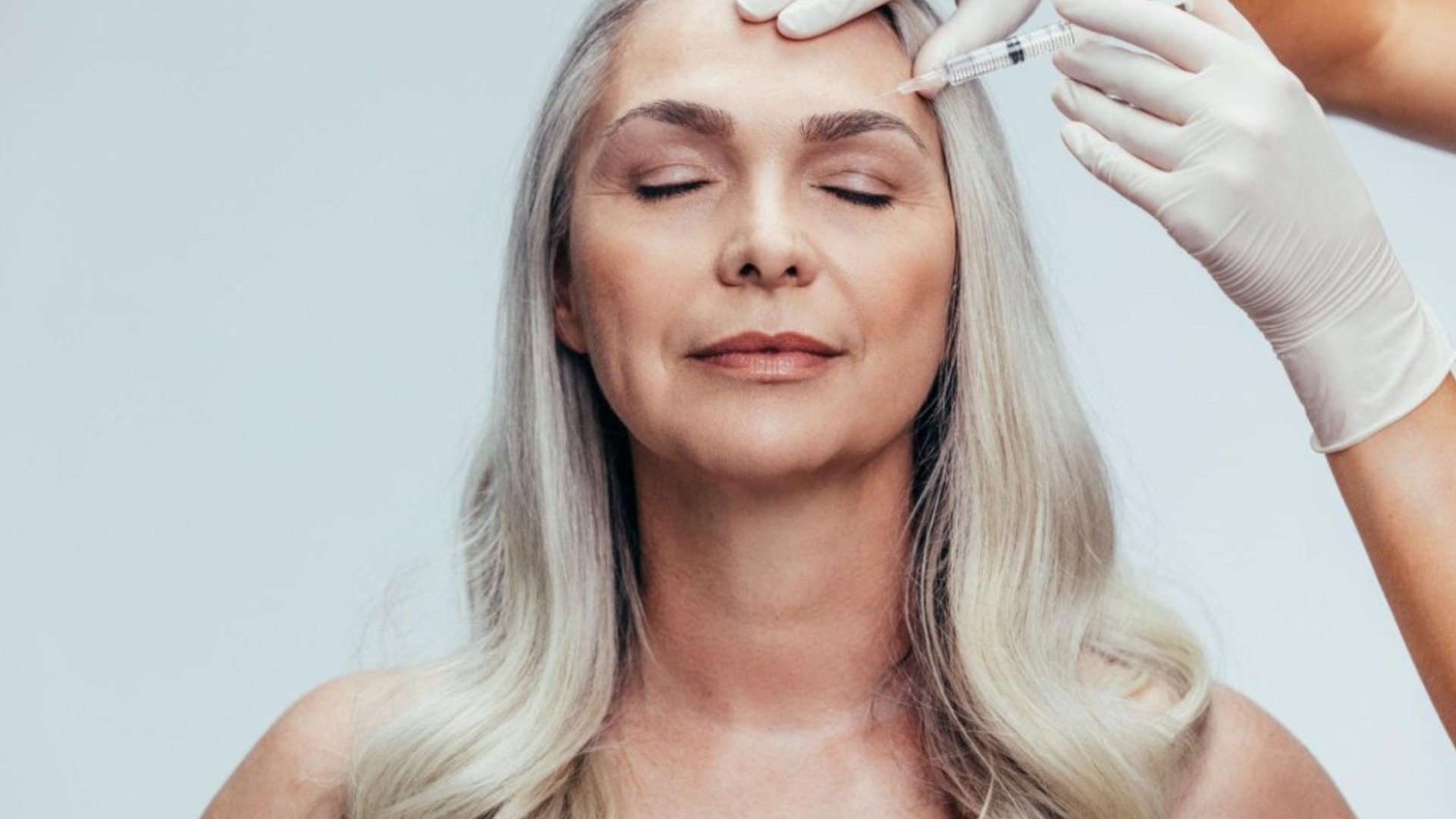, it is recommended to wait at least 48 hours before applying a face mask to avoid interference with the spread and absorption of Botox in the muscle tissue. If there is no significant redness or discomfort after 48 hours, choosing a gentle hydrating mask is safer, avoiding masks containing irritating ingredients (such as acids, alcohol). Limit the mask application time to 10-15 minutes to avoid excessive pressure on the skin. After the mask, gently pat to help absorption, and try to avoid rubbing the injected areas to protect the effects of the injection.
Why Wait
The injections of are a non-invasive cosmetic procedure of muscle relaxation by blocking nerve impulses, thereby temporarily depriving the target groups of muscles of the ability to contract; this smooths wrinkles. However, the micro-trauma to the skin after injection requires a period of time for healing and adaptation to the spread and resorption of Botox. Botox needs some time after injection to stabilize in the tissue of muscles and to start working effectively. Generally speaking, within 48 hours, the absorption and action process of Botox is turned on; skin barrier function is not recovered yet; skin permeability increases. Any external stimulation may interfere with the distribution of the drug, even with light pressure from a face mask, hence affecting the final results.
Facial skin in this period after injection is in an “initial recovery phase”. Capillaries and nerve endings are more sensitive. A mask used during this period will add stress to the skin barrier. If it contains high concentrations of active ingredients, like vitamin C and vitamin A, it could even cause localized irritation, disturbing the process of self-healing of the skin and even leading to irritant contact dermatitis. Waiting for a certain period is thus quite necessary in ensuring both the injection results and the skin condition.
Right Timing
Generally speaking, it is advisable to stop face mask care for at least 48 hours after a Botox injection. Within these 48 hours, the Botox will slowly work in the muscular tissues and develop a blocking effect at the neuromuscular junctions. During this period, facial tissues are relatively fragile and easily influenced by any external forces or chemical components. This ensures the stability of the effect of the injections and safety for the skin. Allowing at least 48 hours will conservatively work on the recovery of the skin to ensure its stability, making sure that the effect of the injection persists and the skin stays safe.
In sensitive conditions of the skin or in the case of high-dose injections, repeating before 72 hours or even longer is not advisable until full restoration of the skin condition. If redness, localized heat, or itching continues during this period, mask use must be postponed to give way for recovery. You must also avoid any facial care if the swelling in the site of injection has not yet subsided. Mask care during the week following resolution of swelling: using gentle, non-irritating products and avoidance of highly concentrated active ingredient products to minimize further irritation in sensitive skin.

Aftercare Tips
The key to skin care after a Botox injection is “minimizing irritation, avoiding overtreatment.” Face touching should be kept to a minimum for the first 48 hours following injections. The face should be washed with warm water and gentle movements without using hot water and rubbing aggressively. For selecting a cleanser, one should go for a non-foaming and gentle formulation so that the active ingredients for cleansing or exfoliating are not too strong and may lead to compromising the skin barrier, making it more sensitive.
Skincare should be all about . Hydrating serums with hyaluronic acid, glycerin, and panthenol work post-injection, as they promote barrier repair and help fix moisture within. Sun protection is important, too; a broad-spectrum sunscreen during the day is suggested to protect the injection area from possible UV damage. It would also be ideal to avoid toners containing alcohol and products containing acids, such as lactic acid or salicylic acid, which could irritate the skin. Sleeping in a supine position will prevent pressure on the face that may misplace or dissipate the Botox.
Dos & Don’ts
It is the details following injections of Botox that outline the final result and skin condition. It is worth avoiding physical influence on the site of injection, including massage, rubbing, or heating, since all these factors will increase blood flow and could lead to the diffusion of Botox from the site of injection to other muscles that were not targeted during the treatment; this may alter the results and perhaps contribute to side effects such as drooping eyelids. Also, avoid vigorous exercises post-injection, especially those that involve increased perspiration, like hot yoga or running, as it may cause dilation in the circulation of blood and interfere with Botox action.
For skincare, avoid the use of alcohol-based products and acid-containing ingredients, such as salicylic acid, mandelic acid, or retinoic acid, which might cause irritation. Although potent anti-aging products are skin-tightening, their application after injection would add more stress to the skin. Any type of exfoliation should be avoided in order not to disrupt the skin barrier. Serums containing ceramides and hyaluronic acid can be used for extra hydration; these provide a restoration of the skin barrier and minimize irritation.
Skin Reactions
Redness, itching, tightness, or a local numb feeling might appear after injection. These are normal tissue reactions to stress and normally resolve on their own in 1-3 days. At the same time, not everyone’s skin is of equal resistance, and some individuals may develop lighter reactions that may be longer in duration. Since face masks usually contain high levels of serum, the application of a mask shortly after injection can give rise to and worsen the reactions discussed above by way of allergic or inflammatory reactions.
If, shortly after the injections, the , it’s best to wait and not apply mask products whatsoever. The skin, during the recovery period, is prone to inflammatory responses, and forcible application of masks may further distress the skin, including hyperpigmentation or injury to the skin barrier function. Especially for those with sensitive skin, the post-injection tolerance is low, and an application of a mask may lead to acute skin reactions. Immediately discontinue the product and consult a doctor if abnormal pain, burning sensations, or other discomforts persist.

Mask Types
When the condition of the skin has improved and it is possible to wear a mask, the type of mask becomes very important. Hydrating masks are indicated first because they usually contain active principles that are gentle yet highly moisturizing, such as hyaluronic acid, glycerin, and panthenol, which would help restore the skin’s moisture balance in no time and alleviate the possible dryness due to the injection. Soothing ingredients like aloe vera and chamomile extract are also suitable for this stage in relieving tightness.
Also, it is necessary to avoid masks highly containing irritating ingredients like alcohol, preservatives, or artificial fragrances, as those can cause sensitivity, especially when the skin has not fully recovered from an injection. One should also avoid cleansing and exfoliating masks, which can interfere with the skin barrier, increasing sensitivity. The sheet masks can be a good option, as their light texture reduces pressure on the place of injection, not allowing unnecessary stress on fragile skin. Sheet masks usually provide fast hydration and are easy to control in terms of time, so the skin is not burdened with much residue.
Safe Practices
The is very important; it should follow “simplicity and gentleness.” When applying a face mask, touch lightly and do not press hard. It should not stay on the skin for too long. Before applying a face mask, one should wash their hands in order to keep the bacteria off the facial skin. Also, try to minimize the number of steps during your skincare routine and do not overuse your products. Try simple skin care, especially after the mask application, in which you do not apply other serums or functional products to avoid stressing the skin.
When you use a mask, do not leave it on for too long, just 10-15 minutes of application. After removing the mask, gently press the skin to allow for better serum absorption. However, you want to avoid rubbing the injection site vigorously because it could affect Botox stability. You can maintain Botox through skincare routines



